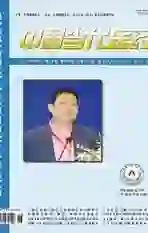不同降糖方案对2型糖尿病患者依从性及HbA1c达标率的影响
2019-11-14刘蔼文蔡钰玫陈梓彤朱志宏
刘蔼文 蔡钰玫 陈梓彤 朱志宏



[摘要]目的 比較不同降糖方案对2型糖尿病(T2DM)患者依从性及糖化血红蛋白(HbA1c)达标率的影响。方法 回顾性分析我院2017年6月~2018年9月门诊随访的120例T2DM患者资料,依据不同的治疗方法分为A组(单纯口服药物)、B组(磺脲类促泌剂+二甲双胍+预混胰岛素30 R晚餐前注射1次)、C组(磺脲类促泌剂+二甲双胍+甘精胰岛素晚餐注射1次)、D组(二甲双胍+预混胰岛素30 R早晚餐前各注射1次),每组各30例。回顾性分析近3个月的四组的血糖控制情况,期间可调整药物剂量,不更改用药方案,比较其血糖达标率及依从性,并分析依从性的影响因素。结果 四组依从性比较,差异无统计学意义(χ2=1.445,P=0.963),血糖达标率比较,差异无统计学意义(χ2=0.372,P=0.946),再把各组按依从性好及不依从的患者分为两组,依从性好组HbA1c达标率明显高于依从性差组(t=11.012,P=0.000);单因素分析结果提示,患者受教育程度、经济状况及是否参加医保均影响患者的依从性(P=0.000)。应用Logistic回归分析结果提示,患者受教育程度、经济状况及是否参加医保,为依从性独立影响因素。结论 四组治疗方案中依从性相似,糖化血红蛋白达标率相似,但这并不能说明该四种降糖方案效果相似,而应根据患者的个体差异选择不同的降糖方案;另外,在治疗方案恰当的情况下,依从性高的患者HbA1c达标率明显高于依从性低的患者;强化健康宣教、提高全民经济水平、全面推行门诊医疗保险制度可提高患者的依从性,从而优化治疗效果。
[关键词]2型糖尿病;糖化血红蛋白;依从性;治疗方案
[中图分类号] R587.1 [文献标识码] A [文章编号] 1674-4721(2019)9(b)-0039-05
Effect of different treatment on the compliance and HbA1c compliance rate in patients with type 2 diabetes mellitus
LIU Ai-wen1 CAI Yu-me2 CHEN Zi-tong2 ZHU Zhi-hong2▲
1. Department of Medical Examination Center, the Second Affiliated Hospital of Medical College of Shantou University, Guangdong Province, Shantou 515041, China; 2. Department of Endocrinology, the Second Affiliated Hospital of Medical College of Shantou University, Guangdong Province, Shantou 515041, China
[Abstract] Objective To compare the effect of different treatment on compliance and glycosylated hemoglobin A1c (HbA1c) compliance rate in patients with type 2 diabetes mellitus (T2DM). Methods The outpatient data of 120 patients with T2DM who followed up from June 2017 to September 2018 in our hospital were retrospectively analyzed. According to different the treatment methods, they were divided into group A (oral Hypoglycemic drugs only), group B (Sulfonylurea secretagogue+metformin+premixed insulin 30 R injection before supper), group C (Sulfonylurea secretagogue+metformin+insulin glargine injection once in the evening), and group D (Metformin+premixed insulin 30 R was injected twice before breakfast and dinner), 30 cases in each group. The control of blood sugar in recent three months was retrospectively analyzed. During the period, the dosage of drugs could be adjusted without changing the medication plan. The blood sugar compliance rate and compliance were compared, and analyze the influencing factors of compliance. Results There was no statistical difference in compliance (χ2=1.445, P=0.963) and blood sugar compliance rate (χ2=0.372, P=0.946) among the four groups. The patients in each group were divided into two groups according to their good compliance and poor compliance. The compliance rate of HbA1c in the good compliance group was significantly higher than that in the poor compliance group (t=11.012, P=0.000). Univariate analysis showed that education level, economic status and participation in health insurance affected the patient′s compliance (P=0.000). Logistic regression analysis showed that education level, economic status and medical insurance were the independent influencing factors of the compliance. Conclusion Compliance and HbA1c compliance rate are similar in the four groups, but it does not mean that the four hypoglycemic schemes have similar effect, but different hypoglycemic schemes should be selected according to individual differences of patients. In addition, in the case of appropriate treatment, the compliance rate of HbA1c in patients with high compliance was significantly higher than that in patients with low compliance; so, strengthening health education, improving the economic level of the whole people and implementing the outpatient medical insurance system in an all-round way can improve the compliance of patients and optimize the treatment effect.
[Key words] Type 2 diabetes mellitus; Blood glucose; Compliance; Therapeutic regimen
2型糖尿病(T2DM)是一种以糖代谢紊乱为主要临床特征的慢性、复杂性及进展性的疾病,随着社会经济的发展、人口老龄化和生活方式的转变,糖尿病已成为威胁人类健康的重要疾患。据2017年国际糖尿病联盟(IDF)报道,目前全球约有4.25亿成人患糖尿病,预计到2045年,全球糖尿病患者将会增至6.29亿[1],这将给世界的经济发展和医疗卫生带来沉重负担,而我国糖尿病患病率更是高达11.6%,患者人数达1.14亿,控制率只有39.7%[2],糖尿病的防控已经是一个社会问题,需要政府、公共卫生机构、医疗机构等部门综合治理。已有大型的临床研究表明,对新诊断的T2DM患者,早期进行严格的血糖控制可降低糖尿病微血管病变、心肌梗死及死亡的发生风险[3-4]。众所周知,国际上公认的糖尿病监控“金标准”为糖化血红蛋白(HbA1c)[5-6],可提示患者过去2~3个月血糖控制情况,英国糖尿病前瞻性研究(UKPDS)确立了HbA1c作为糖尿病合并慢性并发症的预测因子[7],对T2DM及并发症的防治有重要意义,2011年WHO建议在条件具备的国家和地区采用HbA1c诊断糖尿病,诊断切点为HbA1c>6.5%[8]。而血糖及HbA1c达标率与治疗方案的选择及用药的依从性具有怎样的关联性,本研究围绕比较不同治疗方法对T2DM患者依从性及HbA1c达标率的影响予以分析,现报道如下。
1资料与方法
1.1一般资料
选取2017年6月~2018年9月我院门诊随访的120例T2DM患者作为研究对象进行问卷调查,回顾性分析其近3个月的用药情况及血糖控制情况,依据不同的治疗方法分为A、B、C、D组,每组各30例。A组中,男19例,女11例;平均年齡(55.2±7.1)岁;平均病程(6.2±2.5)年。B组中,男20例,女10例;平均年龄(55.3±6.1)岁;平均病程(5.8±2.6)年。C组中,男13例,女17例;平均年龄(52.7±7.5)岁,平均病程(5.2±2.6)年。D组中,男17例,女13例;平均年龄(55.5±5.8)岁,平均病程(6.2±2.5)年。四组的一般资料比较,差异无统计学意义(P>0.05),具有可比性。所有T2DM的诊断均符合世界卫生组织(WHO)编撰的《糖尿病诊断标准(1999)》相关内容。纳入标准:①经临床诊断确诊为T2DM者;②无全身严重器质性疾病者;③无磺脲类促泌剂、二甲双胍、预混胰岛素30 R、甘精胰岛素等药物过敏史或禁忌者,每种治疗方案维持至少3个月以上。排除标准:1型糖尿病、妊娠、合并心脏疾病、恶性肿瘤、感染性疾病、血液系统疾病、严重精神障碍,及急慢性肝功能不全、肾功能不全失代偿者。
1.2方法
1.2.1治疗方法 四组均回顾随访12周,其中A组为单纯口服降糖药物治疗,其中6例单纯口服二甲双胍(中美上海施贵宝制药有限公司,国药准字H20023370)1.0~2.0 g,qd,24例采取二甲双胍+磺脲类促泌剂[格列齐特缓释片(施维雅制药有限公司);格列美脲(广西百琪药业有限公司,国药准字H20030283)治疗,格列齐特缓释片维持剂量60~120 mg/d,格列美脲维持剂量2~4 mg/d。B组采取磺脲类(格列齐特缓释片/格列美脲)+二甲双胍+预混胰岛素30 R(优思灵30/70,珠海联邦制药股份有限公司,国药准字S20100013)0.2~0.4 IU/kg晚餐前皮下注射;C组采用磺脲类(格列齐特缓释片/格列美脲)+二甲双胍+甘精胰岛素(甘李药业股份有限公司,国药准字S20050051)0.2~0.4 IU/kg晚上10点钟皮下注射;D组采取二甲双胍+预混胰岛素30 R(总量0.4~1.0 IU/kg,分为两次)早晚餐前皮下注射。
1.2.2影响因素分析方法 本研究采用自行设计的调查问卷对所有患者资料进行调查,内容包括年龄、性别、受教育程度、经济状况、家族史、病程、血糖情况(空腹血糖、餐后2 h血糖、HbA1c)、不良反应发生情况、是否参加医保、每月漏用药物频次等,随后采用Logistic回归分析法对T2DM治疗依从性影响因素进行分析,具体方法如下。依据依从率将患者分为依从性好组及依从性差组,将两组对比较有差异的单因素带入到回归分析模型中做多元分析,以总结出影响依从性的独立影响因素。
1.3主要仪器和试剂
主要仪器:贝克曼AU5400全自动生化分析仪,西门子Centaur XP化学发光仪,ACT 5DIFF AL及LH780全自动血细胞分析仪,UF-1000i全自动尿液沉渣分析仪。微量血糖分析仪:诺瓦生物医药公司(Stat Strip Xpress)。
主要试剂:贝克曼葡萄糖测定试剂盒(已糖激酶法)(贝克曼库尔特实验系统有限公司)、西门子C肽测定试剂合(美国西门子医学诊断股份有限公司)、糖化血红蛋白(HbA1c)测定试剂盒(胶乳凝集反应法)(上海九弗生物科技有限公司)。
1.4观察指标及评价标准
选取观察指标为四种用药方案下的血糖达标率、总依从性,其中血糖达标判定标准为HbA1c <6.5%~7.0%。依从性分为以下三个标准,即患者能完全按照医嘱要求按时、按量服用药物为完全依从;任一种药物,用药剂量不足、每个月漏用药天数≥1 d而<3 d的为部分依从,每个月漏用药天数>3 d为不依从,总依从性(%)=(完全依从+部分依从)例数/总例数×100%。
1.5统计学方法
采用SPSS 19.0统计学软件处理,对于小样本计量资料,使用Shapiro-Wilk统计方法进行正态性检验,满足正态分布的数据,以均数±标准差(x±s)表示;满足正态、方差齐的计量资料,采用独立样本t检验进行比较;计数资料组间比较采用χ2检验,多因素分析采用Logistic回归分析法,以P<0.05为差异有统计学意义。
[6]陈燕铭,唐喜香,穆攀伟.血糖波动对糖尿病微血管病变的影响[J].中华内分泌代谢杂志,2016,32(9):795-798.
[7]MarathePH,GaoHX,Close KL.American Diabetes Association Standards of medical care in diabetes 2017[J].J Diabetes,2017,9(4):320-324.
[8]World Health Orgnization.Use of glycated haemoglobin (HbA 1c) in the diagnosis of diabetes mellitus[OL]. Abbreviated report of a WHO consultation,2011(2011-01-13)[2013-11-12].
[9]中华医学会糖尿病学分会.中国2型糖尿病防治指南(2013年版)[J].中华糖尿病杂志,2014,6(7):447-498.
[10]Sonne DP, Hemmingsen B.American Diabetes Association Standards of medical care in diabetes-2017[J].Diabetes Care,2017,40(S1):S1-135.
[11]Garber AJ,Abrahamson MJ,Barzilay JI,et al.Consensus statement by the American Association of Clinical Endocrinologists and American College of Endocrinology on the comprehensive type 2 diabetes management-2017 executive[J].Endocr Pract,2017,23(2):207-238.
[12]中华医学会糖尿病学分会,中国医师协会营养医师专业委员会.中国糖尿病医学营养治疗指南[M].北京:人民军医出版社,2010.
[13]母义明,纪立农,宁光,等.二甲双胍临床应用专家共识(2016年版)[J].中国糖尿病杂志,2016,24(10):871-884.
[14]No authors listed.Effect of intensive blood-glucose control with metformin on complications in overweight patients with type 2 diabetes (UKPDS 34).UK Prospective Diabetes Study (UKPDS) Group[J].Lancet,1998,352(9131):854-865.
[15]Weng W,Liang Y,Kimball ES,et al.Drug usage patterns and treatment costs in newly-diagnosed type 2 diabetes mellitus cases,2007 vs. 2012: findings from a large US healthcare claims database analysis[J].J Med Econ,2016,19,(7):655-662.
[16]纪立农,陆菊明,朱大龙,等.成人2型糖尿病基础胰岛素临床应用中国专家指导建议[J].中国糖尿病杂志,2017, 25(1):2-8.
[17]Horvath K,Jeitler K,Berghold A,et al.Long-acting insulin analogues versus NPH insulin (human isophane insulin) for type 2 diabetes mellitus[J].Cochrane Database Syst Rev,2007,(2):CD005613.
[18]Garber AJ,Wahlen J,Wahl T,et al.Attainment of glycaemic goals in type 2 diabetes with once-twice-or thrice-daily dosing with biphasic insulin aspart 70/30 (The 1-2-3 study)[J].Diabetes Obes Metab,2006,8(1):58-66.
[19]Yang W,Ji Q,Zhu D,et al.Biphasic insulin aspart 30 three times daily is more effective than a twice-daily regimen without increasing hypoglycemia,in Chinese subjects with type 2 diabetes inadequately controlled on oral antidiabetes drugs[J].Diabetes Care,2008,31(5):852-856.
[20]Holman RR,Thorne KL,Farmer AJ,et al.Addition of biphasic,prandial,or basal insulin to oral therapy in type 2 diabetes[J].N Engl J Med,2007,357(17):1716-1730.
[21]American Diabetes Association.Diabetes advocacy:standards of medical care in diabetes-2018[J].Diabetes Care,2018,41(S1):S152-S153.
(收稿日期:2019-03-11 本文編辑:崔建中)
